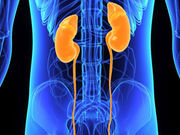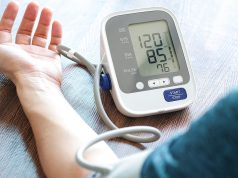Trajectories in eGRF decline were linear for about 87 percent of patients, accelerating for 6 percent
THURSDAY, Sept. 22, 2016 (HealthDay News) — For patients with type 1 diabetes, the decline of estimated glomerular filtration rate (eGFR) is mainly linear, according to a study published online Sept. 19 in Diabetes Care.
Jan Skupien, M.D., from the Joslin Diabetes Center in Boston, and colleagues conducted an observational study involving 364 patients with type 1 diabetes who developed end-stage-renal disease (ESRD) between 1991 and 2013. Serum creatinine measurements were retrieved from clinic visits or research examinations up to 24 years prior to ESRD onset. For the 257 patients with five or more data points, individual trajectories of eGFR were characterized.
The researchers observed a wide range in the rate of eGFR decline per year, from −72 to −2 mL/min/1.73m². For 87 percent of patients, the trajectories were linear or nearly so, accelerating and decelerating for 6 and 7 percent, respectively. In 76 percent, smoothed trajectories did not depart significantly from a linear fit.
“The decline of eGFR in type 1 diabetes is predominantly linear. Deviations from linearity are small, with little effect on the expected time of ESRD,” the authors write. “Linearity of renal decline suggests using slope reduction as the measure of effectiveness of interventions to postpone ESRD.”
Full Text (subscription or payment may be required)
Copyright © 2016 HealthDay. All rights reserved.








